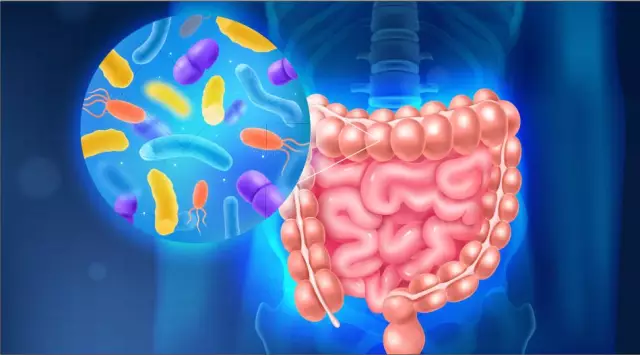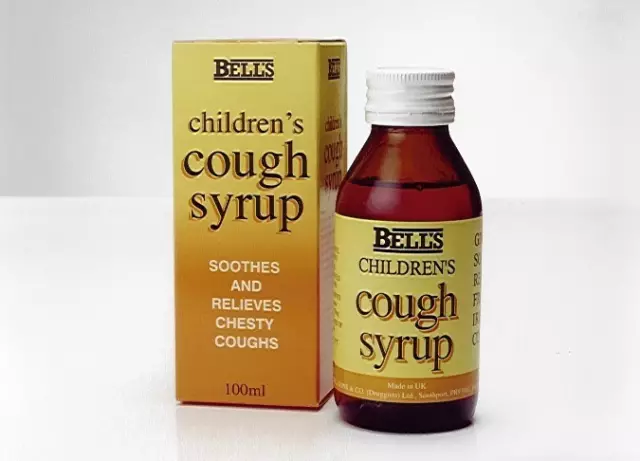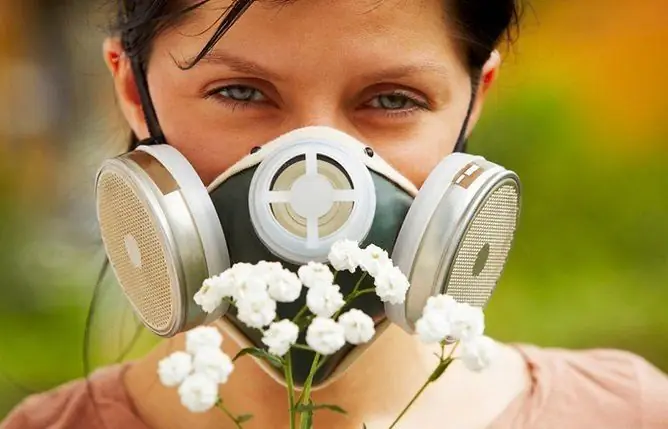- Author Rachel Wainwright [email protected].
- Public 2023-12-15 07:39.
- Last modified 2025-11-02 20:14.
Microsporia
The content of the article:
- Causes and risk factors
- Kinds
- Symptoms
- Diagnostics
- Microsporia treatment
- Treatment of microsporia with alternative methods
- Potential consequences and complications
- Forecast
- Prevention of microsporia
Microsporia (one of two diseases collectively known as ringworm) is a contagious fungal disease that affects the hair and skin and, in severe cases, the nail plate. The incidence is of a pronounced seasonal nature - the vast majority of cases of microsporia occur in the summer-autumn period.

Microsporia - a contagious fungal disease
The disease is widespread almost everywhere, but most often it is observed in the United States of America, Japan, the Caucasus, the countries of Central and Southeast Asia, and western Europe. The incidence rate is 60-70 cases per 100,000 population. In countries with hot and humid climates, microsporia is diagnosed much more often.
Microsporia more often affects preschool and primary school children. Girls get sick 5 times less often than boys. Ringworm rarely occurs in adults. This is due to the content of organic acids in the hair, sweat and sebaceous secretions of an adult, which have the ability to suppress the development of mold mycelium. An interesting fact is that microscopy is almost never observed in children with red hair.
Causes and risk factors
The causative agent of microsporia is a mold keratinophilic fungus belonging to the genus Microsporum, which is widespread in nature. The transmission of infection occurs through the contact-household route (upon contact with a sick person or animal, through infected household items).
The causative agent of microsporia is not able to penetrate through intact skin, the entrance gate for it is microtrauma, calcification, abrasions, and abrasions of the skin. Its virulence, that is, the ability to cause disease, is quite low, therefore, compliance with basic hygiene rules significantly reduces the risk of infection.
In the soil, the microsporia pathogen retains its viability for three months. Therefore, the risk of infection is much higher in people in contact with the ground and wild animals, especially if there is hyperhidrosis (excessive sweating) of the palms or there are changes in the chemical composition of the secretion of the sebaceous glands.

Most often, microsporia is infected by contact with soil or animals
After being introduced into the skin, the microsporia pathogen begins to multiply actively and penetrates the hair follicle. The fungus then infects the entire hair, accumulating between the scales and destroying the cuticle.
The risk group for infection with microsporia includes:
- children of preschool and primary school age;
- young women;
- patients with hypovitaminosis;
- children living in disadvantaged conditions;
- patients suffering from endocrine diseases (hypothyroidism, diabetes mellitus;
- patients with immunodeficiency of any etiology.
Kinds
The disease is classified according to its location:
- microsporia of smooth skin;
- microsporia of the scalp.
In turn, microsporia of the scalp is typical and atypical (seborrheic, exudative, trichophytoid, infiltrative, suppurative).
Symptoms
The incubation period for microsporia is 4-6 weeks. If smooth skin is affected, a red, edematous patch appears on it, which has clearly defined edges and slightly rises above the surface. Over time, its area increases. In the future, the lesions begin to look like intersecting or inscribed rings, which sometimes merge with each other. These rings are formed by crusts, vesicles, and nodules. The number of rings usually does not exceed 4-5 pieces, and their diameter ranges from 0.5 to 3 cm.
In young women and children, microsporia proceeds with symptoms of slight peeling of the skin in the lesion focus against the background of a bright inflammatory reaction.
Scalp microsporia affects children aged 5 to 12 years. With the onset of puberty, the disease is independently cured due to the appearance of organic acids in the sebaceous secretion and hair, which have a fungicidal effect.
Microsporia of the scalp is characterized by the formation in the temporal or parietal areas of one or two primary foci with a diameter of up to 5 cm. On the sides of them, screenings can form in the form of smaller foci of lesions. Initially, the microsporia pathogen affects only the hair follicles. Upon closer examination, it is clearly visible that the hair in the affected area is surrounded, like cuffs, by thin ring-shaped white scales. After 7-10 days, the fungus spreads along the entire length of the hair and destroys its structure. As a result, the hair becomes brittle and easily breaks off at a distance of 5-7 mm from the skin. This leads to the fact that the lesion looks shorn. Hence the second name of the disease - ringworm. The remaining stumps of broken hair are completely covered with mushroom spores and lookas if powdered with talcum powder or baby powder.

Microsporia of the scalp
The most severe form is suppurative microsporia. It develops in patients with severely reduced immunity, suffering from severe somatic illnesses or late seeking medical help. With this form of the disease in the affected area, the skin color becomes bluish-red, after which soft knots form, the surface of which is covered with small pustules.
Diagnostics
Microsporia can be suspected on the basis of a characteristic clinical picture and an indication of close contact of the patient with animals. A number of laboratory tests are performed to confirm the diagnosis:
- dermatoscopy (examination of the skin with a special magnifying device);
- scraping microscopy - the method consists in detecting mycelium filaments, it allows you to detect the presence of a fungal disease in a patient, but is not suitable for differential diagnosis;
- cultural diagnostics (method of inoculation on culture media) - allows you to isolate the pathogen of microsporia from the material under study, to determine its sensitivity to antifungal agents;
- luminescent study - carried out by examining the hair from the lesion in a darkened room under the specific light of a Voodoo lamp. The mycelium of the fungus Microsporum glows with a greenish glow. Such a glow may be absent at an early stage of the disease, since the hair is still slightly affected. However, if you remove the hair along with the root and examine it under a Voodoo lamp, then the glow at the root will be observed even in the last days of the incubation period. Due to its simplicity and availability, luminescence research is widely used in dermatology both for the primary diagnosis of microsporia and for assessing the quality of the treatment.

Dermatoscopy is one of the stages of microsporia diagnosis
It can be difficult to timely diagnose smooth skin microsporia in patients with atopic dermatitis. This is due to the fact that skin lesions in dermatitis and microsporia can be very similar. The appointment of hormonal ointments provokes the further development of a fungal infection and increases the severity of the symptoms of microsporia, and relieves the symptoms of atopic dermatitis.
Microsporia treatment
Microsporia is treated by a dermatologist. As a rule, local treatment of lesions is used with ointments, sprays, emulsions, which include antifungal agents. The frequency of application of these drugs, the total duration of therapy are determined by the doctor, taking into account the severity of the disease, the patient's age, and his general condition.
With deep and multiple lesions, especially when the patient develops a suppurative form of microsporia, systemic treatment may be required, in which antifungal drugs are prescribed in the form of tablets, or administered by injection.
In cases where microsporia is accompanied by a pronounced inflammatory reaction, combined preparations are used that include fungicides and corticosteroids, which have a powerful anti-inflammatory effect. With deep lesions, a good effect is provided by the use of drugs based on dimethyl sulfoxide (Dimexide).

For deep skin lesions, Dimexide is effective
In the absence of skin lesions for the treatment of microsporia, the alternation method is used, during which the foci are treated with an iodine solution, then with ointment applications.
When a secondary infection is attached, local or systemic antibiotic therapy is performed.
Treatment of microsporia with alternative methods
Currently, doctors have a significant arsenal of drugs that can quickly and reliably relieve patients of microsporia, even in its advanced forms. Therefore, traditional methods of treating this disease are rarely used today, as a rule, as part of a complex therapy prescribed by a dermatologist.
The following folk remedies are used to treat microsporia:
- Tincture of birch buds. For its preparation, 2 teaspoons of medicinal raw materials are poured with 300 ml of medical alcohol, insisted for 15 days, and then filtered. Apply only externally! Apply to the lesions 3-5 times a day.
- Black poplar bark tincture. Put 50 g of crushed black poplar bark into a container with a ground cork and pour 250 ml of 70 ° ethyl alcohol into it, leave for 10 days. Used to lubricate the affected skin 3-4 times a day. Treatment is carried out until complete recovery.
- Tincture of calendula flowers. This herbal remedy can be purchased at a pharmacy or prepared by yourself. It is used to wipe affected areas several times a day. The course of treatment is long, until complete recovery.
- Juice from a mixture of garlic and onions. Onions and garlic in equal proportions are crushed to a mushy state, then the juice is squeezed out, with which lesions are lubricated 2-3 times a day.
- Ointment based on sea fish broth. To prepare the ointment, you must first boil a strong broth from any sea fish. Then take 500 ml of the resulting broth, filter it and cool. Then add a gruel of 120 g of butter and 2-3 heads of thoroughly mashed garlic into it. Apply the resulting ointment with a thin layer on the affected areas 2-3 times a day.

Alternative methods are widely used in the treatment of microsporia.
Potential consequences and complications
In the absence of timely treatment, microsporia can be complicated by the addition of a secondary infection with the development of purulent-infectious diseases (boils, carbuncles, phlegmon, sepsis).
Alopecia (baldness) can become a complication of microsporia of the scalp.
Forecast
With timely treatment, the prognosis for microsporia is favorable, the disease ends in full recovery. After the end of the course of treatment, the patient remains under the dispensary supervision of a dermatologist for 12 months. Deregistration is carried out only after receiving negative tests for mushrooms.
Prevention of microsporia
Prevention of microsporia includes the following activities:
- preventive examinations of children in organized groups (kindergartens, primary school grades);
- careful adherence to the rules of personal hygiene;
- limiting contact with street animals;
- regular veterinary examinations of pets;
- dispensary observation of persons who were in close contact with patients with microsporia.
Among contact persons, specific prophylaxis of microsporia is mandatory. It consists in the use of medicinal shampoos with antifungal action (with povidone iodine or selenium sulfide). With these shampoos, you should thoroughly wash your hair 2 times a week for 10-15 minutes. The prophylactic course of their use is 4-5 weeks.
YouTube video related to the article:

Elena Minkina Doctor anesthesiologist-resuscitator About the author
Education: graduated from the Tashkent State Medical Institute, specializing in general medicine in 1991. Repeatedly passed refresher courses.
Work experience: anesthesiologist-resuscitator of the city maternity complex, resuscitator of the hemodialysis department.
The information is generalized and provided for informational purposes only. At the first sign of illness, see your doctor. Self-medication is hazardous to health!






